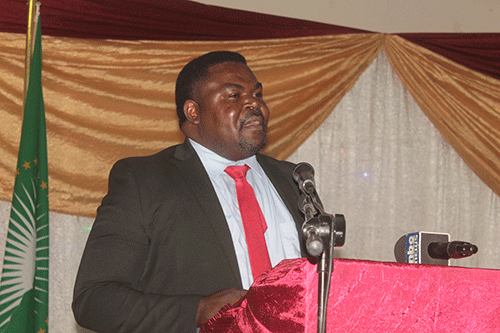RUNDU – Kavango East Regional Council chairperson and Mukwe constituency councillor Damian Maghambayi has moved a motion to establish more constituencies in the region. It currently only has six constituencies, despite it being vast and having the numbers in terms of population.
Maghambayi tabled this motion before the council recently, and it went through management unopposed. It was accepted and approved by the full council, and consultations are expected to start from 6 November this year.
“In terms of the standing rules for the convening and holding of, and procedures at, meetings of regional councils and committees established by regional councils, I hereby in terms of Rule 12 move a motion to call for the appointment of a delimitation commission by the President of the Republic of Namibia for purposes of changes to boundaries of regions, or the division or re-division of regions into constituencies,” he submitted. Every 10 years, Namibia’s Constitution, in terms of Article 104, authorises the President to appoint the Boundaries Delimitation and Demarcation Commission (BDDC), of course with the approval of Parliament.
The purpose of the BDDC, headed by a judge of the High Court or Supreme Court and two other persons, is to delimit and demarcate the boundaries of Namibia, and to recommend the determination of the boundaries and names of regions, constituencies and local authorities. This constitutional task is to be read with the Regional Councils Act of 1992, and the Commissions Act of 1947.
“The focus is to demarcate some bigger constituencies within the Kavango East into two, for better coordination of development activities,” Maghambayi said. During the last boundary delimitation, a new Kavango East region was established with only six constituencies. This, according to the regional council, has created unfavourable governance conditions for the Kavango East Regional Council to facilitate prudent socio-economic development.
“This is because some constituencies like Mukwe, Mashare and Rundu Urban are big and cumbersome for proper planning and the development of the region. Hence the last Housing and Population Census for 2011 revealed that the population for the Kavango East region stood at 136 823, higher when compared to other regions which have more than six constituencies, for example the Zambezi, Hardap and //Kharas,” he noted.
The fewer constituencies covering large areas have also brought frustration among the electorate, as the elected leaders are unable to attend to all corners of the constituencies due to the vastness.
“The Mukwe constituency, for example, had 16 678 registered voters, and Rundu Urban had 35 750 registered voters by 2020.
Comparatively, some places in the Oshana region like the Okatyali constituency had 2 021, and the Enguwantale constituency had 2 520 registered voters, respectively. So, that underlines the necessity to demarcate the identified constituencies in the Kavango East region accordingly,” he argued.
“Furthermore, the region is currently the recipient of insufficient budget allocations due to a new criteria developed by the Ministry of Urban and Rural Development to allocate funds to regional councils, which is dictated by looking at the following funding percentage: Multidimensional poverty rate by region at 20%, number of constituencies in the region at 20%, number of declared settlement areas in the region at 20%, and total population of the region at 14%, vastness of the region at 13%, and distance from the regional capital to the capital city 13%,” he continued.
“We are losing points at number two and three, as we only have six constituencies, despite the vastness of the region, and only one settlement area,” he said.
Maghambayi further indicated that the Kavango East Regional Council has hired Urban Dynamics consulting firm to conduct feasibility studies to analyse the establishment of settlement areas, focusing on identified growth points to be established as settlement areas, namely Muroro, Ndonga Linena, Kangongo as well as the Mukwe village.
– jmuyamba@nepc.com.na


